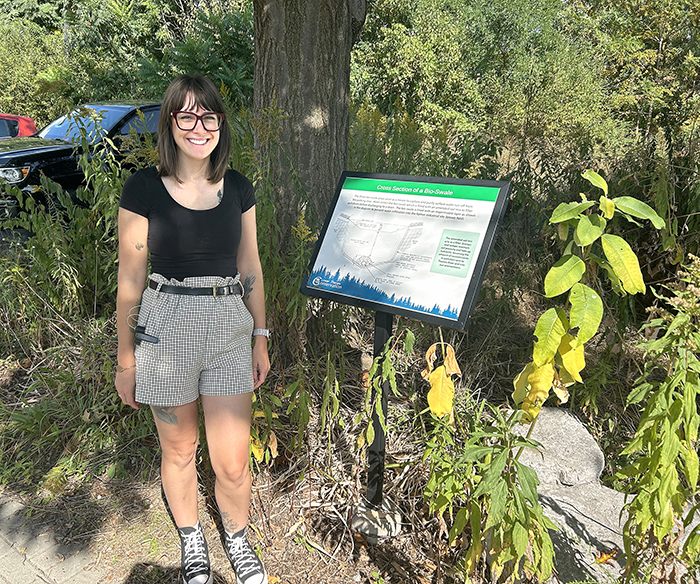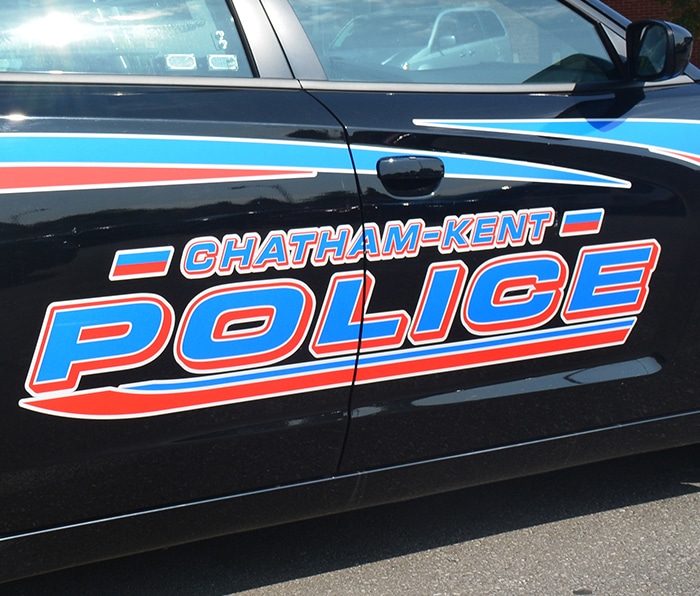
What some on social media have dubbed an eyesore in front of the Lower Thames Valley Conservation Authority offices in Chatham actually serves multiple important purposes.
That according to Genevieve Champagne, manager of conservation and lands with the LTVCA.
To some, the strip of land in front of the Thames Street property, is a jumble of plants. And that is exactly what the LTVCA wants. However, it’s a carefully orchestrated grouping rather than a random jumble.
“A lot of people don’t understand it and just think we let it go feral,” she said of the property. “It was by design. It’s a bio-swale, which is a swale that has a biomass blended soil mix.”
The bio-swale is designed to serve multiple purposes above and below ground.
At its base, the land has perforated tile at the bottom covered in gravel. The soil atop that is rife with plants at the surface that have deep route structures.
“This filters the water and collects water more efficiently than a normal swale. A normal swale is just grass,” Champagne said. “The root system will absorb water. And with that, less water is going into the storm sewer system.”
Additionally, they are all drought-tolerant plants. What’s more, they are native species.
“They’re very hardy. They’re meant to be in this climate,” Champagne said. “We don’t have to water it ever.”
Right now, on top of its water-capturing abilities, the swale is providing habitat for Monarch butterflies as they migrate south for the winter.
Later in the fall, it will serve a seed supply depot.
“In the fall, our plants start to dry out. They’re looking a little more crispy,” Champagne said. “Staff will collect seeds at the office here and at other conservation areas. We’ll redistribute across our properties and give away some to other land owners.”
Once the seed collection is complete, staff will trim back the swale for the winter.
The bio-swale has been in place for half a decade. Champagne said it is maturing nicely.
“When it was first planted, it didn’t look anything like it does now. We have quite a habitat in there,” she said. “As the plants mature, they drop seeds within the area. These re-establish and they thicken up. It’s a really important, diverse part of our ecosystem.”
Champagne said the bio-swale of diverse but native species is not isolated to the LTVCA offices. They are in place in other conservation areas, and in certain places maintained by the municipality.
“It works well in spaces that don’t need to be constantly maintained. It works well along Mud Creek, for example,” she said.
It just doesn’t look like a flower garden, but instead serves purposes beyond the aesthetic.





